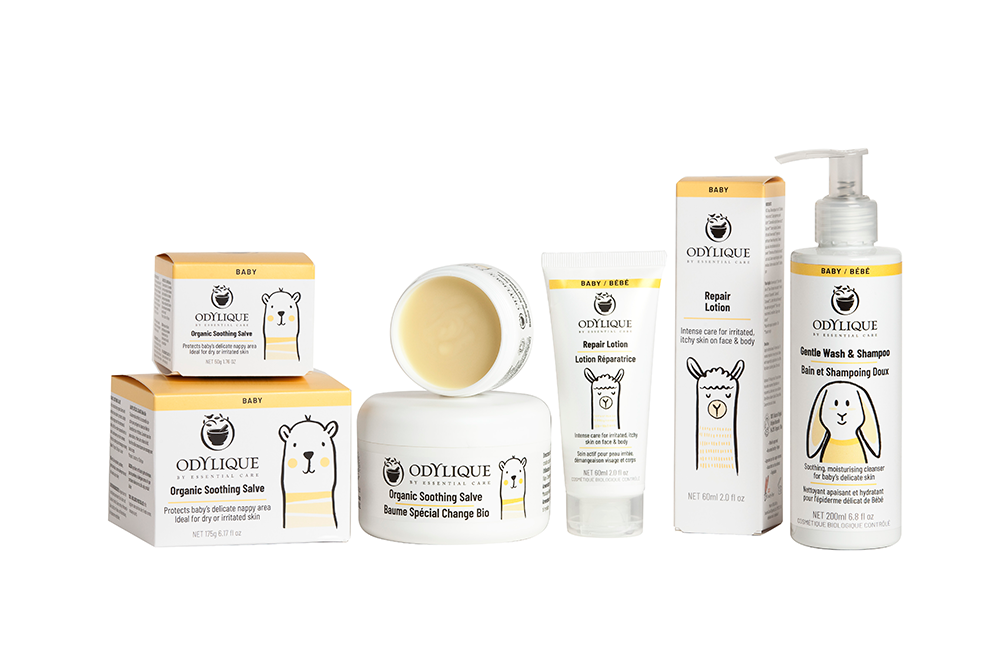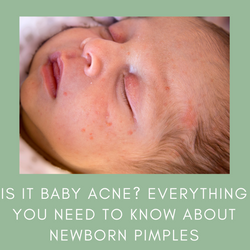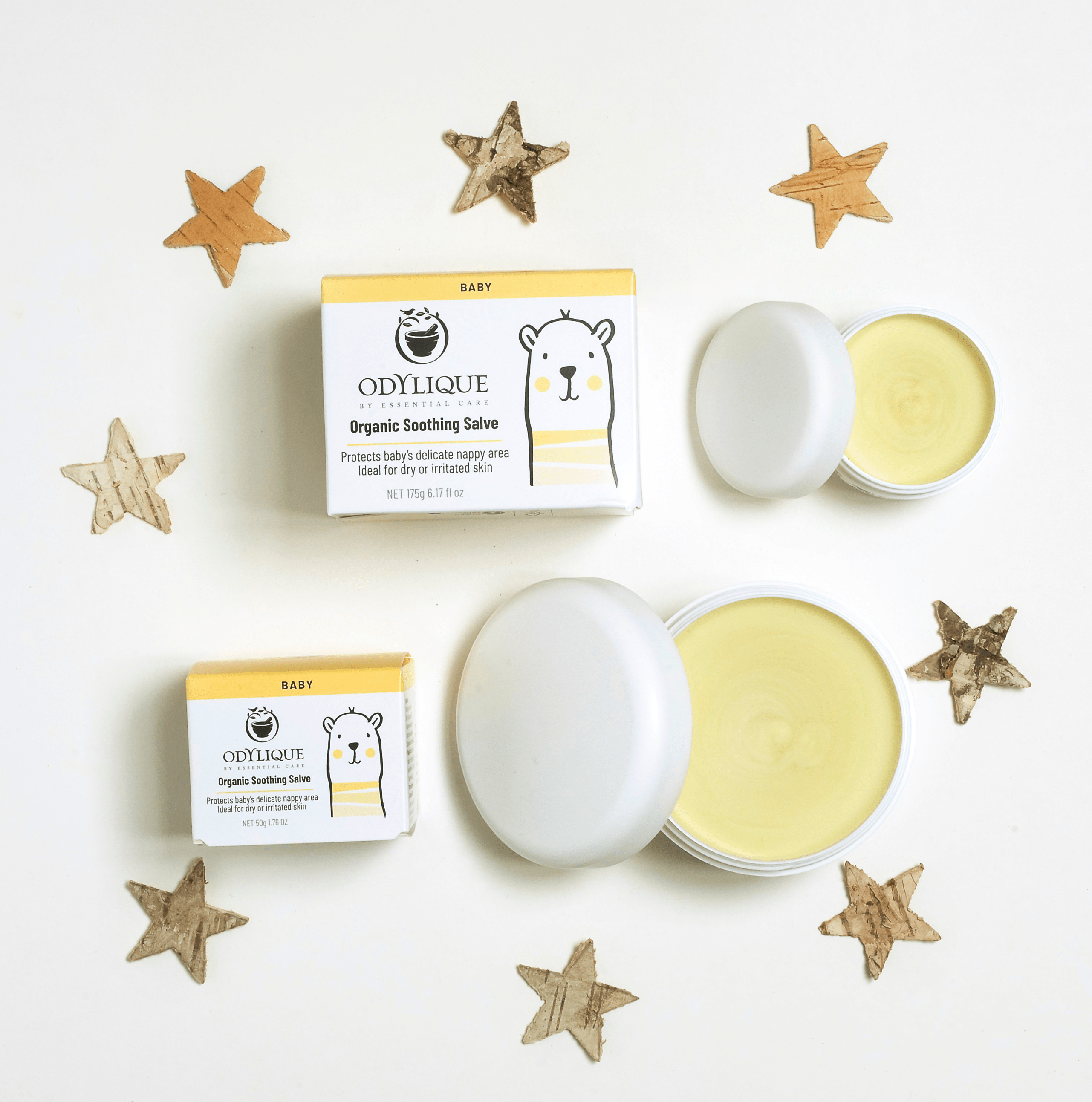In this article, we’ll be exploring the topic of baby acne, a condition which develops on the face and neck of newborns. We’ll address why it happens, how to manage it and whether or not it has long term effects.
When we think of a baby's skin, we think of that lovely, peachy feel they have. We imagine their skin as soft, smooth, and totally perfect.
So, it may surprise you to know that up to 20% of babies are born with neonatal acne, or baby pimples.
The appearance of acne is never a welcome one – at any age – and can be a real source of anxiety for parents who are desperate to find out why it has appeared on their child’s skin and how to get rid of it.
Parents also worry about issues like infection, redness, and scarring, which is all very reasonable. The good news is, baby acne is nothing to worry about. Let us explain why.
What Does Baby Acne Look Like?
Baby acne looks like a miniature version of the same acne that develops on teens, without the deep infections or scarring.
It appears at about two to four weeks after birth (but can be sooner) and looks like tiny little red whiteheads or blisters filled with white fluid, often across the nose, cheeks and forehead and will leave the skin looking red too.
According to Michael Samycia, MD, it is an “inflammatory response to the saprophytic yeast Malassezia and is not true acne. 1 It presents with inflammatory papules and pustules, is more common in boys, resolves by four months of age and rarely requires treatment”.
It may look worse if the skin is cold, exposed to too much sun, or if your child has allergies and intolerances to cows’ milk or lactose.
Spots are common across the back, neck, and face, but most children only get it on their faces.
When Does Baby Acne Appear?
Mostly within two – four weeks. If you’re seeing spots within the first six weeks of your baby’s life, it is classed as baby acne. If you see spots beyond this, it is classed as infantile acne, which is a more serious form.
Infantile acne tends to start at around three to six months, and can last for much longer, from a few months up until 2 years of age and requires more action to be taken. Usually, a child with this condition will need to see a GP or a dermatologist to manage the symptoms.
Baby acne is not distressing for a child, but infantile acne can be more painful, so if you notice spots lingering for longer than a few months, clarifying whether this is infantile acne or not would be a good first step before treatment is decided.
Is it Baby Acne or a Rash?
Diagnosing a skin condition can be confusing; after all, a lot of them look very similar! But without knowing what your baby’s condition is, it’s hard to know how to treat it.
Firstly, if you have a very small baby and they have any type of rash ALWAYS check in with your health visitor, midwife or GP. The internet is not a substitute for medical professionals.
However, there are obvious signs that mark baby acne out from other rashes.
Rashes are usually flat, or scaly and may be red, with little dots on the skin. Baby acne is bumpy and has little pustules.
Eczema or psoriasis will present with scaling and flakiness. Baby acne does not.
Baby acne is not itchy like other conditions can be (such as eczema), so you shouldn’t notice acne as a source of irritation.
It also subsides after a few weeks (sometimes up to a few months), while eczema, for example, is more persistent.
Neonatal acne and milia often get mistaken for one another. Milia appears as tiny white bumps (1-2mm in size) and look fairly like acne. Milia bumps aren’t usually inflamed, so they don’t take on the characteristically red appearance that acne often does.
But if you’re unsure, again, a professional diagnosis can help clarify.
What Causes Baby Acne?
Unlike adult forms of acne, there are far fewer known triggers for acne in babies, and therefore much less you can do about it. The most common cause is an inflammatory response to the saprophytic yeast Malassezia.
Hormones from the womb can cause overproduction of oil in the skin and this may be a cause in some cases.
Some babies with allergies show it and it can be worsened by irritation from rough fabrics, washing detergents and soap.
Please remember that if your child has acne, it is not your fault; so don’t feel guilty about it! You didn’t cause it and much of the time, baby acne is a short-lived phase that will pass quickly.
The Baby Acne Breast Milk Connection
Like the theory surrounding exposure to hormones in the womb being a trigger for baby acne, hormones in breast milk are thought to be another possible cause.
Therefore, acne can appear worse around the mouth – spots can appear aggravated after coming into contact with breast milk or spit-up.
Breast milk is naturally full of hormones, however, if the mother has an imbalance of hormones herself, the hormone content of her breast milk could reflect this.
One simple thing we can do to help avoid imbalances is to minimize their exposure to synthetic chemicals (found in cleaning products and skincare for example).
Certain chemicals, such as parabens, can mimic oestrogen in the body. By using organic skincare like ours at Odylique, you can rest assured that what you’re putting on your skin is safe, effective and not going to interfere negatively with your hormones.
Remember, it is unavoidable for hormones to be passed onto your baby when breastfeeding and much of the time, this is what is meant to happen! If you can cut the risk of exposure to unnecessary hormones – great, but if not, don’t let this be a source of stress for you at such a special time in your life
Firstly, and most importantly, do NOT attempt to squeeze or pick the spots. You will scar your baby and put them at risk of severe infection.
Time
In most cases, baby acne will clear up on its own after a few weeks. Because there isn’t much research around the issue, waiting it out is the most sensible thing you can do.
If you find that the acne is persisting, contact a healthcare practitioner to help put your mind and ease.
Natural Baby Skincare
New-born babies don’t require skincare – washing them in warm water should suffice until they are 3 months old.
However, if baby acne turns into infantile acne, setting them up with the best skincare possible is an important consideration.
Lots of parents use moisturising/massaging their baby as a lovely way to bond and relax their little one, especially before bedtime. But your baby’s skincare could be affecting them.
You may assume that skincare for babies is exceptionally gentle. Unfortunately, that’s not always the case.
Skincare – even skincare designed for babies – can contain harsh synthetic ingredients that can irritate the skin and make blemishes worse. Some of the ingredients to avoid include sulphates, parabens, fragrance and artificial preservatives.
There are some VERY high-profile cases in the US and UK of talc manufacturers for example being sued for health damage caused to babies.
For baby acne, the NHS suggests the use of a mild moisturiser, but how can you be sure that what you’re using is ‘mild’?
…Go organic!
By choosing truly organic skincare (to make sure, check that it’s independently certified), you can be assured that the product is absent from synthetic irritants.
Our Baby Range
The ultra-gentle baby range at Odylique has been specifically designed with even the most sensitive skin in mind, ensuring your baby’s skin is loved, nourished, and protected.
Our Baby Repair Lotion can be used all over the face and body to help restore hydration, calm irritation with chamomile and encourage healing with wonderfully soothing aloe juice. It’s also gentle enough to use on sensitive, acne-prone skin.
We also recommend switching the rest of your baby’s skincare to the most natural option. Our dual-action Baby Gentle Wash & Shampoo is a great way to cleanse and balance your baby’s skin and hair, without comedogenic (pore-clogging) ingredients.
Remember, baby acne is thought of as a hormonal condition, so don’t be under the impression that over-washing your baby’s skin is the answer, either.
Although pesky blemishes on your baby’s skin aren’t ideal, there’s really nothing to worry about if they do pop up.
Ask our experts about our organic baby skincare range here >


